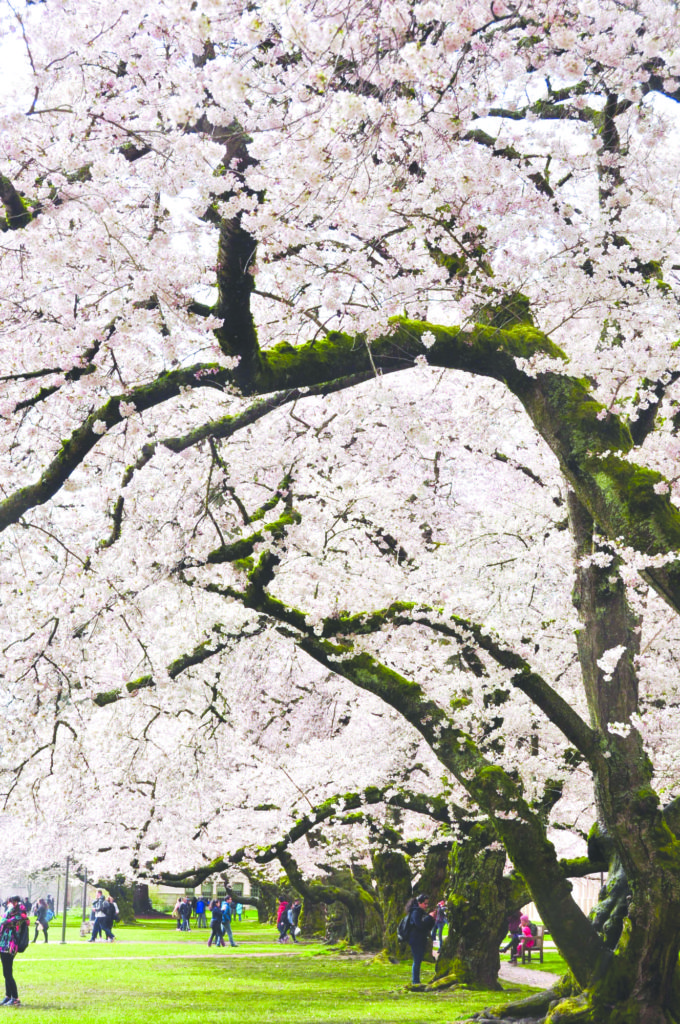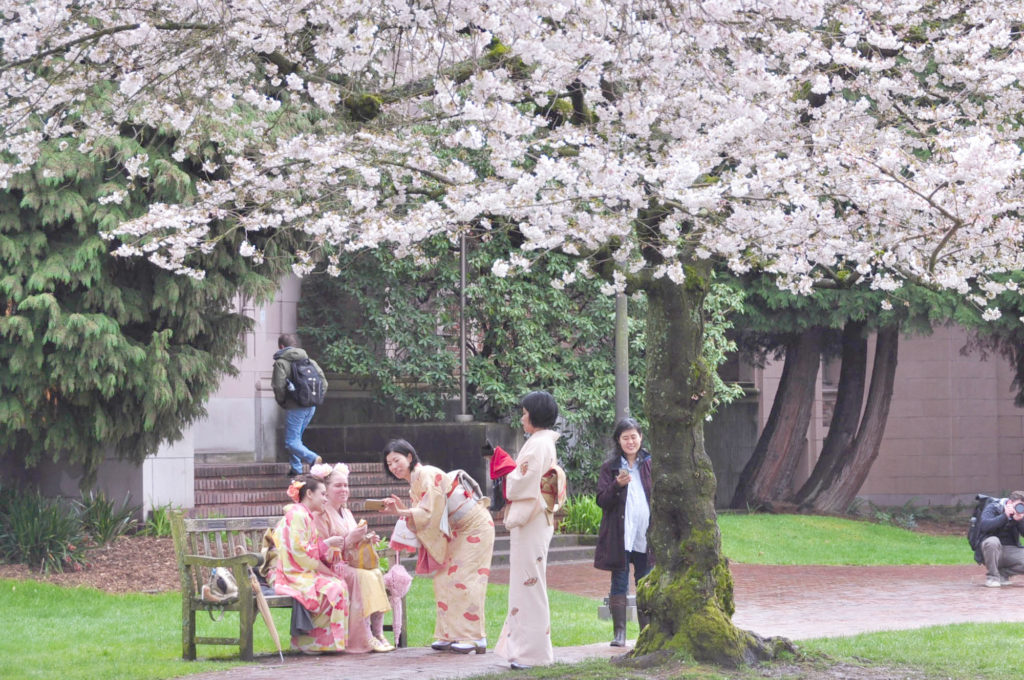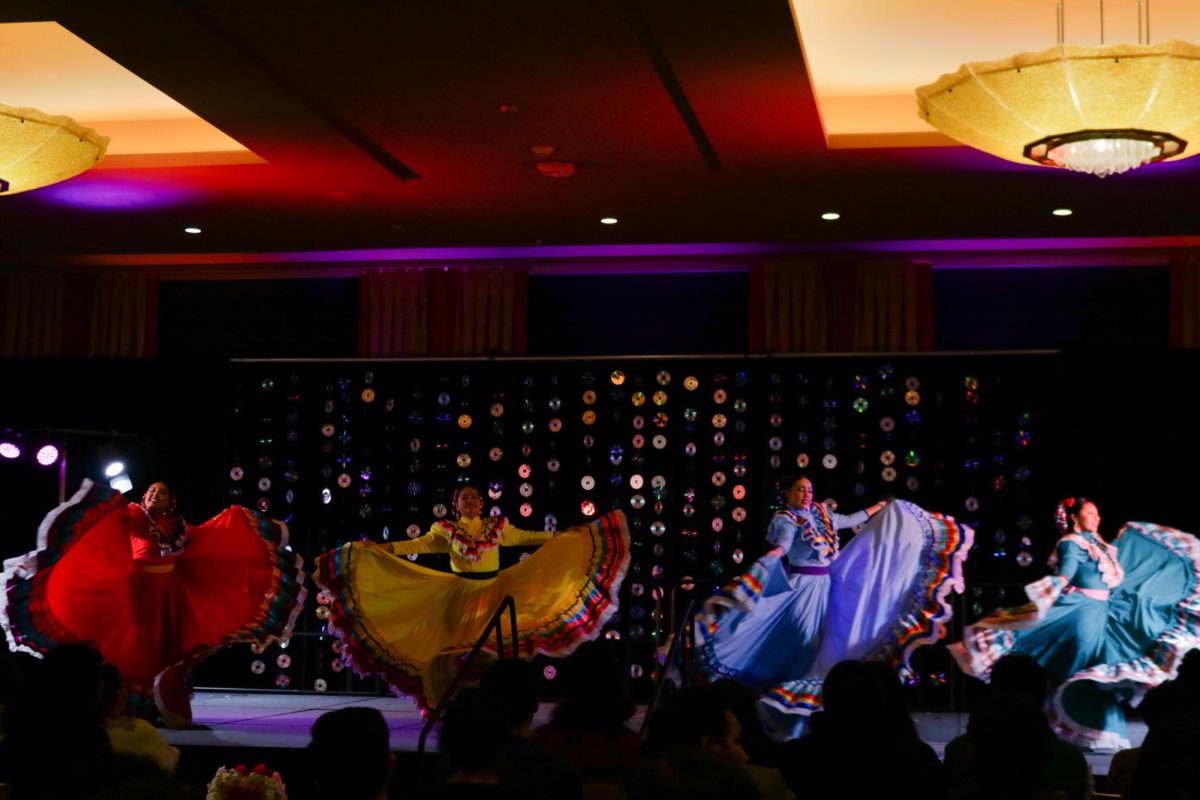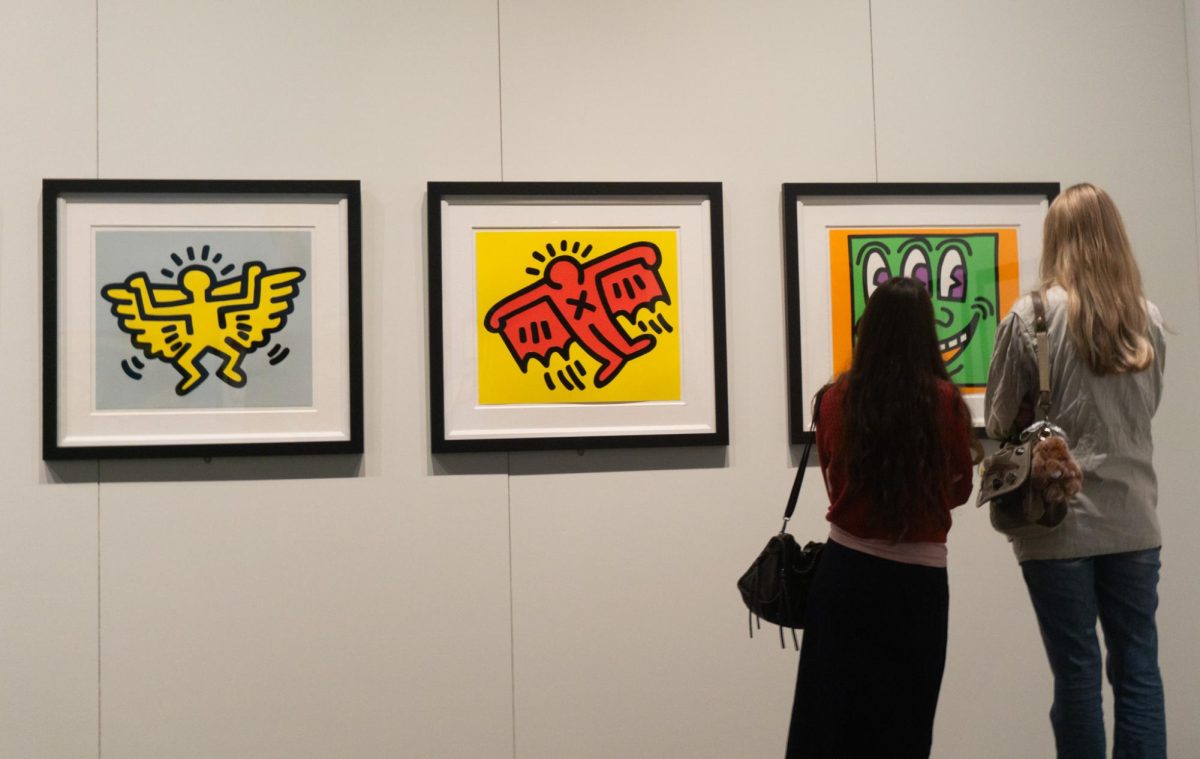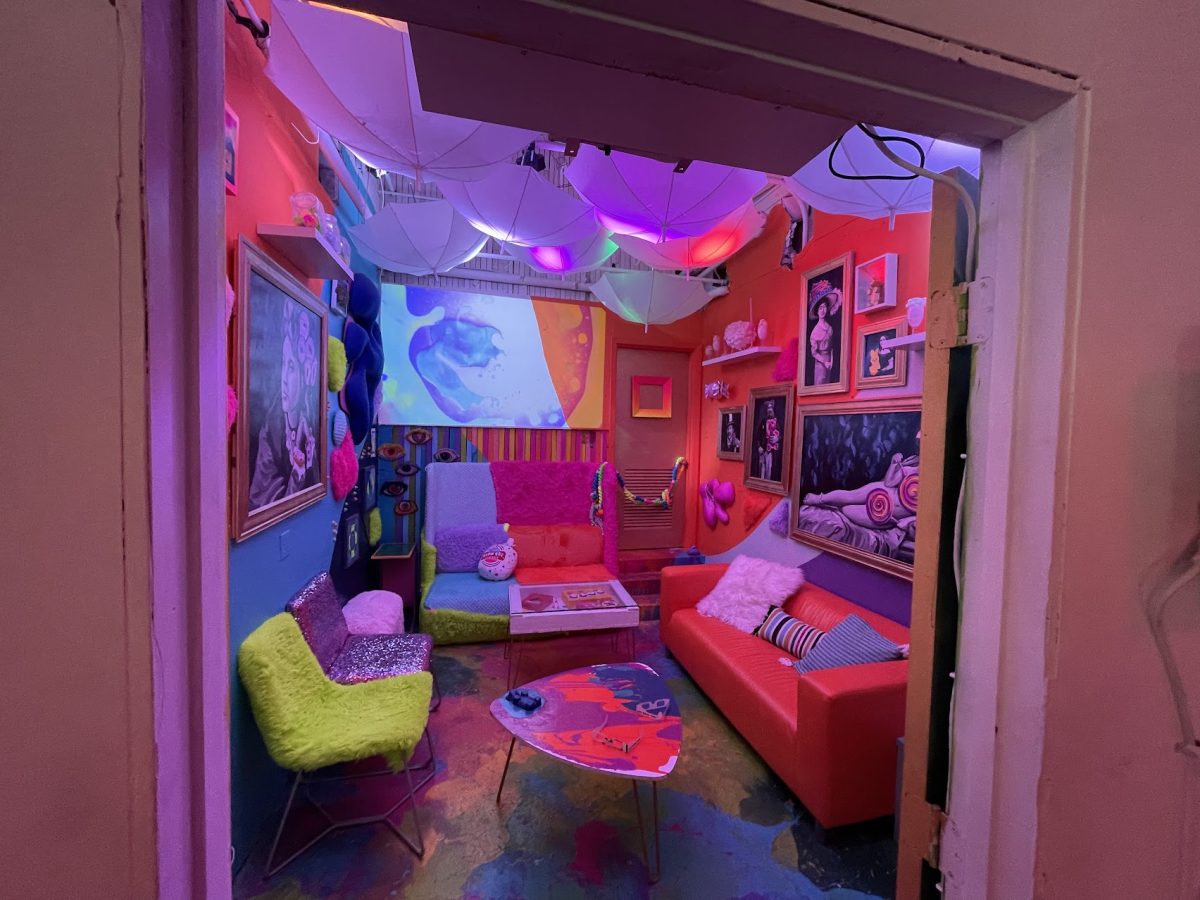People take pride in the beauty of spring in Seattle. Daylight hours reach further into the evening and small buds open to reveal beautiful flowers of all shapes and colors. And for this city, springtime draws large crowds of tourists intent on seeing one special tree: the cherry blossom.
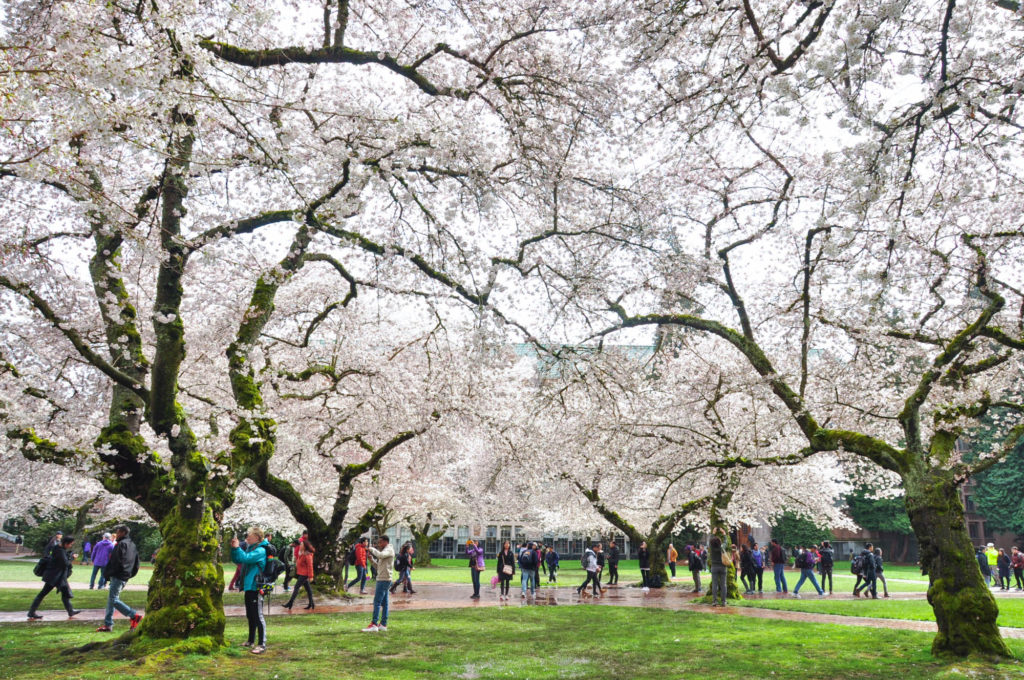
Visitors flock to UW’s quad every year to enjoy the signature cherry blossoms.
One of the most popular places in Seattle to view the cherry blossom is in the Quad at the University of Washington. The temperamental trees have been looked after carefully to ensure longevity, and are currently around one hundred years old.
The cherry blossom’s presence in the city and on University of Washington’s campus is special for Japanese people in Seattle.
“Here, having this connection on the Quad, I think that’s one of the most special things that we could ask,” said Koh Shimizu. “I feel just so blessed and privileged to have that as our ‘background,’ to me I think it’s the forefront of everything else, but it’s beautiful.”
Last year, the University of Washington Department of Asian Languages and Literature hosted the very first university-sponsored Cherry Blossom Festival. It was hosted again, indoors this time because of the rain, just last week. Shimizu said that she was asked by University of Washington Professor Paul Atkins to help demonstrate a traditional Japanese tea ceremony. Atkins has been teaching at University of Washington since 2002, and said that the initial idea for the festival was the brainchild of his friend Shizu Usami, a Japanese calligrapher.
Atkins explained the significance of the cherry blossom on University of Washington campus.
“I think they’ve really cemented the bonds between the United States and Japan,” he said, “because they are in our prime real estate, it’s right in the middle, it’s the Quad, everybody knows them. So when I teach this stuff I don’t have to explain to students what cherry blossoms look like—they all know. I just teach them to see them. So it really unites us, spiritually, to Japan.”
The festival was sponsored by a Japanese website called junglecity. com, which is currently run by Takumi Ono, a Seattle University alumnus.
“I think it is very important because people already seem to know about the Japanese culture and its cherry blossom,” Ono said, “but I think it is a very great opportunity for them to learn about it through Professor Atkins who can really explain it in a beautiful way. And even Japanese people, us from Japan, can learn so much about their culture.”
Atkins also explained the social significance of the cherry blossoms in modern Japan.
“You don’t look at the cherry blossoms by yourself, that’s not fun. You bring your friends, and you look at them together. You exchange impressions, you exchange opinions.”
Atkins recommends this ‘social’ approach as one of the best ways to view the blossoms on University of Washington campus. He encourages visitors to make a day out of it and bring some light snacks and beverages. Or, alternatively, he suggested coming at night.
“If you have classes all day, you come up, and then it’s like an otherworldly experience,” he said.
For many, viewing the cherry blossoms is a rich, spiritual experience. To really “see” the cherry blossoms, Atkins encourages people to read Japanese poetry. As he sees it, this will provide a richer and deeper lens to see the trees.
“Especially because Seattle University is a Jesuit university, it’s about seeing meaning in your everyday life,” Atkins said. “Not just running through the motions, but the spiritual aspect, as well. There’s a deep spiritual aspect to cherry blossoms that I hope everybody will discover, but you have to know a little bit about poetry.”
Haley may be reached at
hwitt@su-spectator.com



